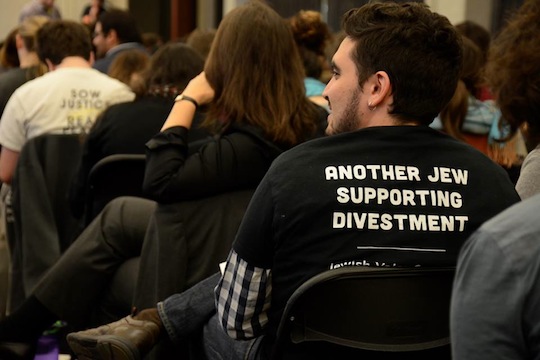There are no guarantees that the near future will herald freedom for Israel/Palestine. It will, however, shatter the perception of comfort that has paralyzed Israel since the beginning of the millennium.
By Ran Greenstein
When we look at the history of the Israeli-Palestinian conflict, a curious pattern can be detected. Every 20 or 30 years a major turning point is reached. This happens in part due to pure coincidence, and in part due to natural processes involving generational change, which takes two or three decades to mature.
The cycle started in 1897 with the foundation of the Zionist movement, which gave a political dimension to the quest for Jewish settlement of Palestine. It continued in 1917 with the Balfour Declaration and the creation of Palestine in its current boundaries, and then on to 1947, when the UN partition resolution led to the establishment of Israel and the Palestinian Nakba. That was followed by 1967 – the re-unification of Palestine under Israeli military control – the First Intifada in 1987 and the onset of the current phase of territorial inclusion combined with Palestinian demographic exclusion.
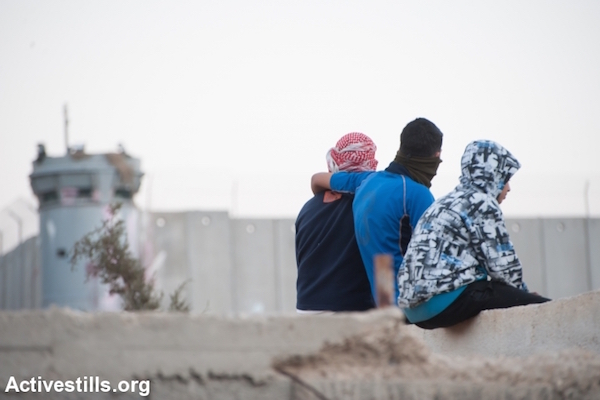
Nothing remarkable happened in 2007, which means that 2017 is next in line. What can we expect then in three years’ time?
Three crucial processes are under way, guaranteed to produce changes that would make the current status quo untenable. But a word of caution is needed here: change is bound to happen, but it will not necessarily be of a positive nature. It will open up new opportunities while also presenting new challenges. The exact direction will depend on proper preparation of activists and movements to make the most of the emerging circumstances.
What are these processes? Let us examine each in turn.
The first involves Palestinian resistance in the post-Gaza war period. It is too early to talk about a third intifada, the unity government has hardly made an impact so far, and the Palestinian Authority continues to make noises about taking its diplomatic campaign to the UN and the International Criminal Court but does nothing concrete. And yet, the nature of the political debate is changing – the voices calling for continuation of the U.S.-sponsored and Israeli-dominated “peace process” have almost disappeared. It is clear to Palestinians that nothing of value can possibly come out of that process, even if a formal notice of termination of talks is not likely to be served soon.
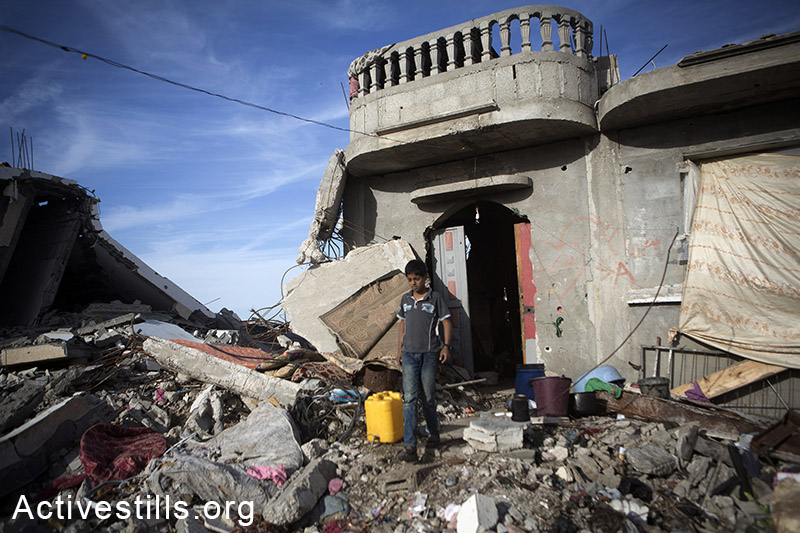
What is the alternative then? Armed resistance has its symbolic attractions but exacts a very high price from the population with meagre results to show for it. Three months have passed since the last Gaza ceasefire without bringing residents any relief from the conditions that triggered the fire in the first place. Initiatives by individuals who use whatever means at their disposal to attack Israeli targets, whether military or civilian, grab headlines but remain isolated incidents. We may see more of these but they are very unlikely to bring about meaningful change.
With both the Oslo process and the armed struggle proving useless at best (if not outright damaging to the national cause), the only way forward is unarmed mass uprising, along the lines of the First Intifada, backed by a unified leadership. Conditions are still far from there yet, but encouraging signs are emerging, pointing to growing awareness of the necessity of this course of action. Direct action – protests, marches, building bridges over the apartheid wall (literally and metaphorically), boycotts of settlements and their products and refusal to become captive markets for Israeli products, forging political links across militarized boundaries – are some of the steps Palestinians have been taking already and will continue to take in an intensified form in coming years. And all that with a goal of making the Israeli regime ungovernable.
There is no telling how quickly, effectively and massively Palestinians will organize to pursue that goal. One thing, however, is clear: the delusion that the Oslo process can be salvaged has been laid to rest. Future efforts – on the ground and on the diplomatic scene – will take place outside its framework. It may take a while for the process to mature fully, and we can expect by 2017 to have embarked on a new paradigm of struggle.
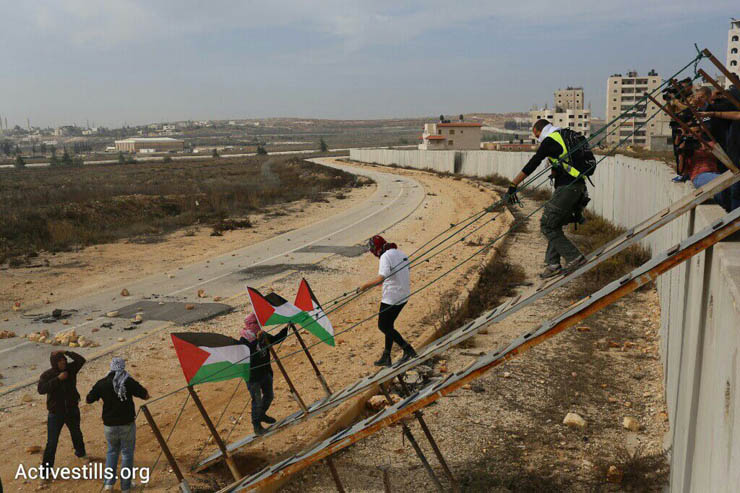
The second process complements the first; it involves the global arena. Under U.S. leadership no international pressure has been applied on the Israeli regime to change its policies. The formal excuse for that is the notion that the 1967 occupation is a temporary arrangement that would reach a resolution through a process of negotiations, culminating in the formation of a Palestinian state alongside the State of Israel. Any external interference in the dialogue between the two sides to the conflict would hamper the chances of a resolution. This notion is no longer tenable: there is no negotiation process, no dialogue, no movement toward a resolution. It is clear to global actors that Israel has no intention to withdraw from the occupied territories and that the U.S. – whether under Democratic or Republican administration – has no intention of using its power to make that happen.
This realization frees actors to pursue campaigns of external pressure on Israel, led by civil society organizations, academics, unions, solidarity movements – whether independently or under the label of the Boycott, Divestment and Sanctions (BDS) movement. The European Union has set in motion plans to impose sanctions on Israel should it continues with settlement policies that obstruct the prospect of an independent Palestinian state. These are all in their early stages, without having had much of an impact so far.
While little chance exists of a change in official U.S. policy towards Israel in the near term, the U.S. itself is experiencing an epochal change, with the demographic decline of the traditional support base for Israel (older white people) and the rise of younger more critical voices – including in the Jewish community.
By 2017 we can expect these trends to gain momentum and puncture the immunity that Israel has enjoyed, having been shielded from criticism and protected from suffering consequences for its violations of international law and UN resolutions. This would make it much more difficult to maintain its current course: the pretense of negotiations together with the unilateral determination of their outcome through the use of force. Eating the territorial cake while keeping all options open will no longer be viable.
The third process is internal, and involves the perennial choices: between the Jewish and democratic nature of the state, and between guns and butter. The 2011 summer protests opened up, for the first time since the 1970s, a prospect of social change from within. But they dissipated without bringing about any short-term improvement in people’s living conditions, let alone structural economic changes. With the cost of living as high as ever, housing unaffordable to many families with two working parents, budgets diverted from social services to spending on settlements and the military, as well as deteriorating public facilities, the costs of maintaining the current trajectory of the regime are becoming unbearable.
So far, the strategy of war mongering (invoking external enemies from Iran, Hamas and the Islamic State to Ebola, African migrants, and the draft of ultra-Orthodox Jews into the army) has worked for the government. Instead of working out solutions for their own needs and concerns the bulk of the Israeli-Jewish population has fallen prey to political “boogeymen,” whose ability to gain popular support depends on spreading fear among their constituencies. How long will this continue to be effective?
Since nothing has improved since the last round of protests, and many social and economic indicators are showing signs of further, rapid deterioration, it is difficult to see how fear will continue to block protest for much longer. By 2017 we can expect the social rebellion to have revived its strength and erupt again in a powerful form. But to make a difference and sustain the choice of butter over guns, people must deal with the other crucial choice and realize that the forced marriage between the Jewish and ‘democratic’ aspects of the state is not viable. Only a struggle that overcomes fear and turns away from the heavily militarized and settlement-oriented priorities of the state can bring about real social improvement. This struggle can succeed if it mobilizes masses of people in a democratic movement, which breaks through ethnic and religious boundaries. The full incorporation of Palestinian citizens – who were left on the margins in 2011 – will be the crucial test of that. Confining social protests to the Jewish bubble is a sure recipe for repeated failure.
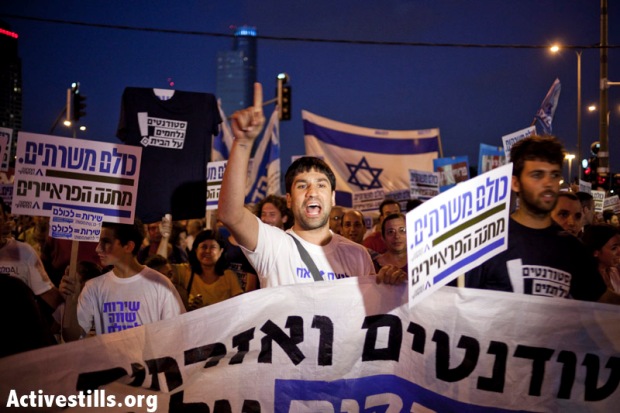
Signs pointing in this direction are meagre. We have mostly experienced moves in an opposite direction – increased racism, exclusion and violence against dissidents. On their own, internal Israeli dynamics are unlikely to result in a progressive outcome. But combined with intensified Palestinian resistance and greater external pressure, which will raise the cost of defying international legitimacy, the balance of forces may begin to change. Three more years are sufficient time in which the new dynamics can work themselves out, just in time for the centenary of the creation of modern Israel/Palestine, and half a century since the extension of Israeli domination over its entire territory.
Of course, conditions of crisis, tension and pressure can result in contradictory outcomes: movement towards greater repression, more focused and powerful struggle for freedom, attempts to find comfort in the oppressive consensus that shuns dissent. Or perhaps it can result in more openness towards society’s others, in order to solve together our common problems, tightening the Jewish nature of the state while also broadening its democratic horizons.
There are no guarantees that 2017 will herald freedom, but it will shatter the comfortable holding pattern that has paralyzed Israeli society since the beginning of the millennium: no more negotiations that serve only to entrench the occupation, no more diplomacy as usual, no more pretending that neutrality between the two sides is anything other than siding with Israeli oppression, no more peaceful coexistence between Jewish ethnocracy and liberal democracy, no more guns and butter. Choices will have to be made – it is up to activists to ensure they are the right ones.
Ran Greenstein is an Israeli-born associate professor in the sociology department at the University of the Witwatersrand, in Johannesburg, South Africa.
Related:
Welcome to Netanyahu’s ‘resolution’ to the conflict
There’s nothing static about the West Bank ‘status quo’
Apartheid or not, separation is the reality

